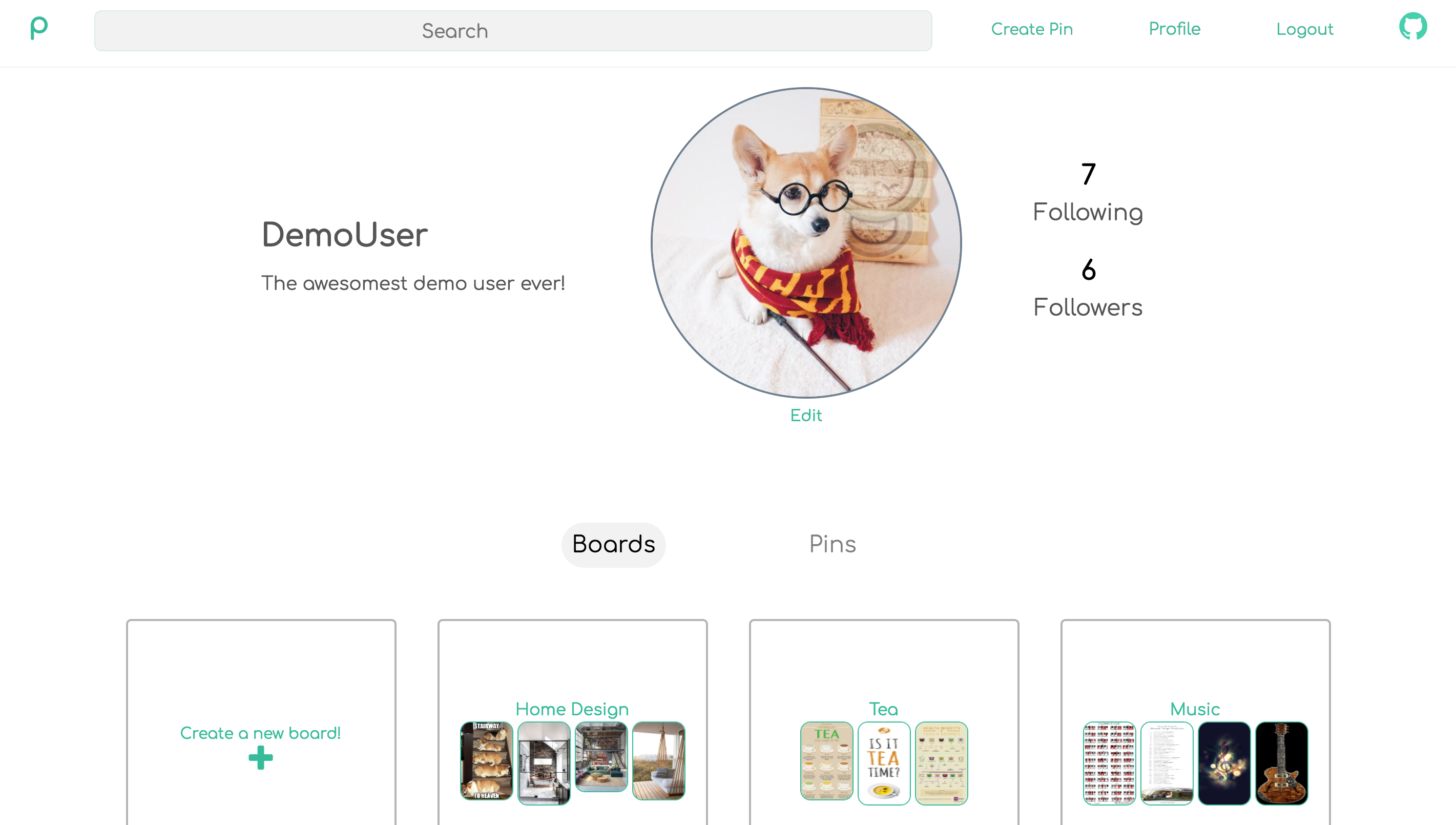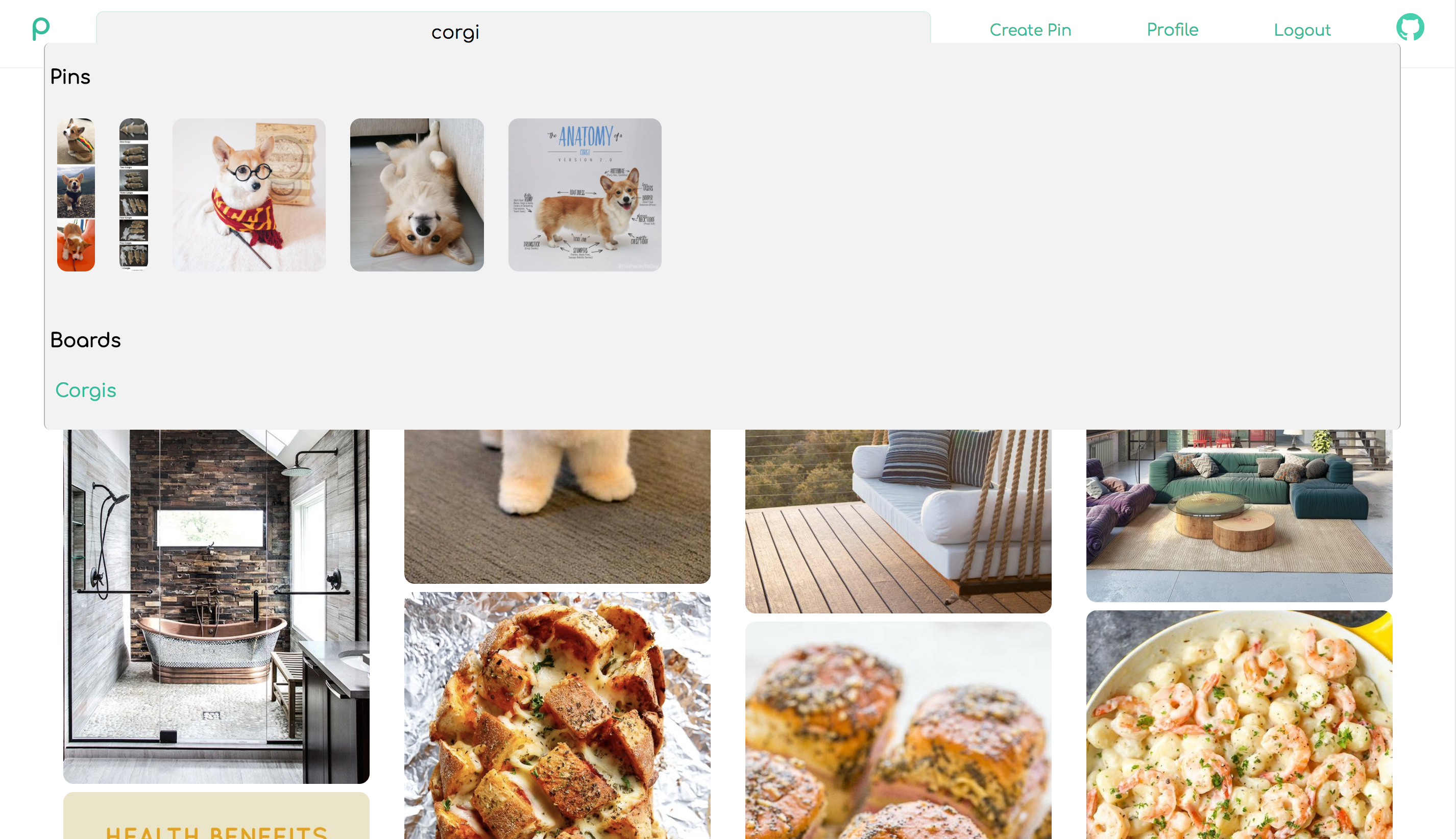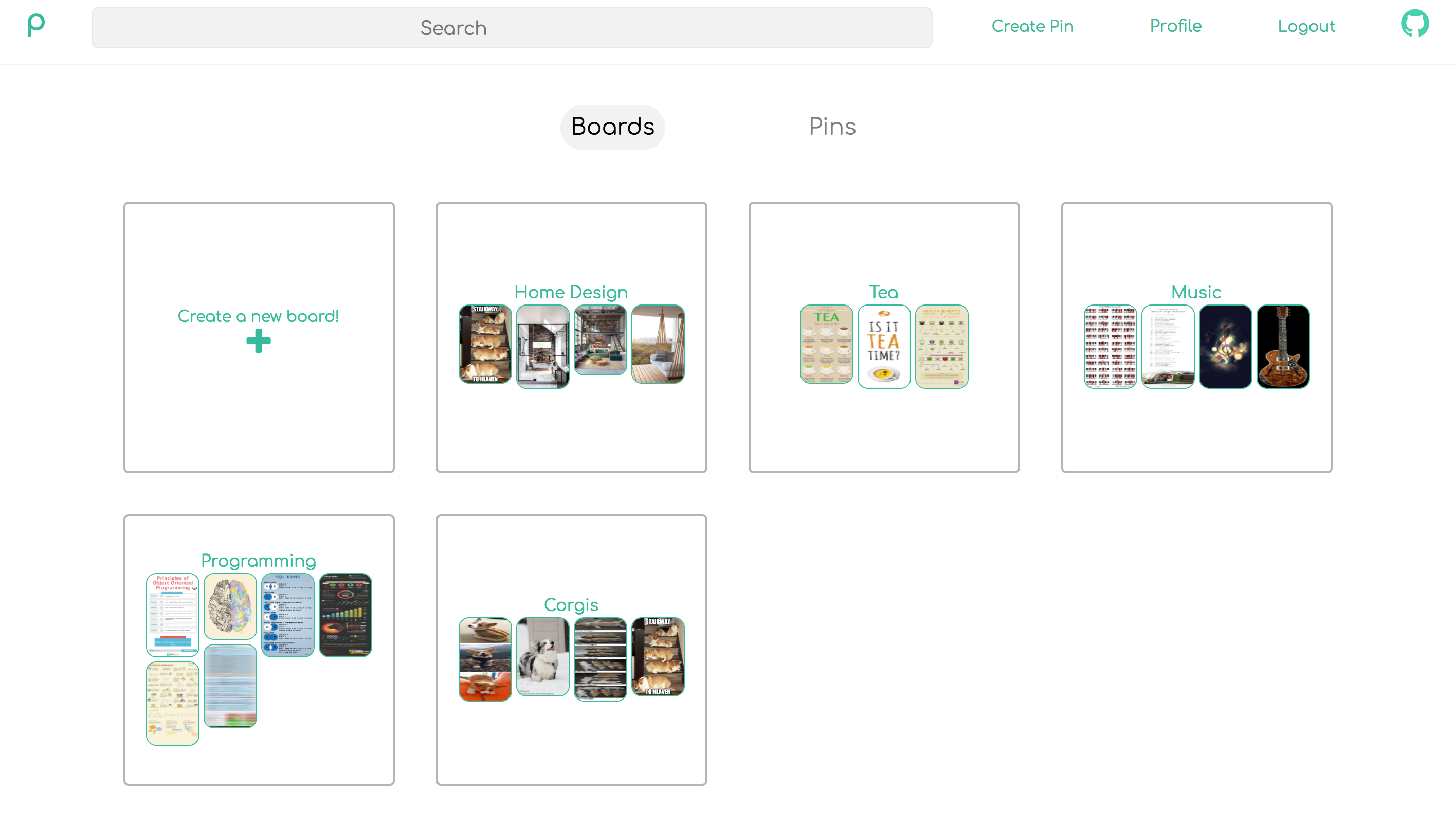Pinned is a full-stack web application, inspired by Pinterest. This site enables users to share their creative ideas as well as discover others' ideas through searching and "pinning ideas to boards".
Disclaimer: Login background image taken from Pinterest
This personal project uses Ruby on Rails with a PostgreSQL database on the back end, which provides ease in data fetching and storage with simple RESTful APIs. In conjunction with Rails, Pinned uses React.js with a Redux framework on the front-end for modular front-end data flow. Redux's predictable state and self-encapsulated React components that only change when their own data changes allow for web applications like Pinned to function with quickness and scalability.
Pinned's database is comprised of three main entities - users, pins, and boards.
Pins are stored on the back-end with a user_id, that is linked to the current_user who created the pin after a current_user fetch request to the back-end. Similar to the idea of pinning an item to a pin-board, pins have the functionality of pinning to a board, and deletion by the user.
Boards are stored on the back-end, and are more private than pins. When logged_in, a board may be created which is a user's personal showcase of pins for a specific topic. When a pin is pinned to a board, an instance of Pinning is created, which connects a pin and a board through pin_id and board_id through a many-many relationship. Boards may also be searched for other users to view.
In addition to the having an encrypted front-end authentication, users may edit their profile and follow/unfollow other users. Similar to Pinning, a many-many join table through Following is used to connect users to other users. A user may view other users' followers and followings through their profile page.
In order for a user to discover ideas, a searching feature was implemented that searches the entire rails database and displays all pin titles, board titles, and usernames that match a user's input query string in the search bar. Searching is the functional backbone that allows a user to use the application to its fullest.
The searching feature was implemented using the rails gem pg_search, which utilizes named scopes to take advantage of PostgreSQL's text search capabilities. Pinned uses PGSearch's whose_X_starts_with method_missing to filter all items that have a column attribute X corresponding to a specific query string parameter obtained from the user.
The following code snippet displays the pg_search setup in the Board model and Api::SearchesController. By creating a search_scope in Board, PGSearch can query Board data in more advanced ways than vanilla ActiveRecord.
class Board < ActiveRecord::Base
include PgSearch
multisearchable :against => :title
pg_search_scope :whose_title_starts_with, against: :title, using: {tsearch: {prefix: true} }
validates :owner, presence: true
belongs_to :owner,
primary_key: :id,
foreign_key: :user_id,
class_name: :User
has_many :pinnings, dependent: :destroy
has_many :pins,
through: :pinnings,
source: :pin
end
class Api::SearchesController < ApplicationController
def index
query = params[:query]
@search_results = {}
@search_results[:pins] = Pin.whose_title_starts_with(query)
@search_results[:boards] = Board.whose_title_starts_with(query)
@search_results[:users] = User.whose_username_starts_with(query)
render 'api/searches/show'
end
endThe home page of Pinned is the digital version of a person's DIY pin-board. As a result, the display of the boards and pins should be clean and aesthetically pleasing to foster creativity. To accomplish a pin / grid like layout, Pinned uses masonry-layout to display an optimized grid layout based on the space given.
Masonry is used in both the index page, as well to display a user's boards. The following code snippet is an example implementation of a nested grid via <Masonry></Masonry> to display a user's boards in their profile, as well as the first 8 pins in each board.
import React from 'react';
import Masonry from 'react-masonry-component';
import { values } from 'lodash';
class UserBoards extends React.Component {
...
render() {
...
const masonryOptions = {
fitWidth: true,
transitionDuration: 0
};
return(
...
<Masonry
elementType={'div'}
disableImagesLoaded={false}
className='profile-boards-container'
options={masonryOptions}
>
...
{ reversedSortedBoards.map( (board) => {
return (
...
<Masonry
elementType={'div'}
disableImagesLoaded={false}
className='board-display-pictures-items'
options={masonryOptions}
>
{ values(board.pins).slice(0, 8).map( pin => {
return (
...
)
})
}
</Masonry>
);
})}
</Masonry>
...
)
}
export default UserBoards;In order to manage the many images that are uploaded to Pinned, Cloudinary is used to deliver images optimized for any device quickly. Cloudinary is used alongside dropzone and superagent which allows a user to easily drag and drop photos into a form such as editing their profile.
When the amount of pins in the database becomes too large where fetching all at once becomes unfeasibly slow, and infinite scroll would prove worthy. The index page would fetch only a certain number of pins (~50), then when the user scrolls down past a certain distance in the page, another fetch request would occur and add more pins to the page. This implementation would allow for a smoother user experience.
A user could not want their boards to be seen to the public, so adding a section in their profile of secret boards only visible to themselves would be a nice feature. This would be done with a boolean column in the users table called secret, which would set as true or false during the creation of the board.



